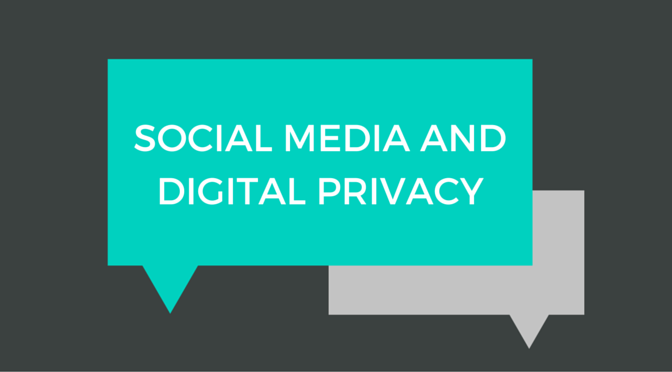
We hear this time and again in the training we deliver. People want to embrace social media, but they’re afraid that, by engaging on social networks, they’ll lose control of their information and open themselves up to unwanted attention.
This is equally as true for business owners as it is for you and me in our private lives. Facebook have noted a worrying pattern of user behaviour, in which as people’s friend counts grow, the amount of personal information and updates they share shrinks. As a society, it seems we’re growing more cautious about sharing intimate details of our lives with people we don’t necessarily know well.
Digital privacy is a key concern for anyone using social media.
Even given this seeming trend for increased privacy, social media can give away information about us in ways we may not realise.
The rise smartphones has enabled the rise of location-tracking in our apps. Facebook Messenger tracks user location by default, so with a tap of your finger you can see where someone was at the time they sent a message. A Twitter user’s location can be revealed through advanced search. On LinkedIn, anyone can view your current place of work, as well as contact you directly.
On top of that, photos (whether uploaded directly by a user or uploaded by friends who then tag the user in) can reveal people’s whereabouts or recent activities and movements.
Plenty of research has been done into the impact of technology on survivors of stalking. This level of malicious information-gathering seems to be, from speaking to many clients and friends, something that we are all concerned about on some level.
You can follow this link to read the research on the link between technology and online abuse, harassment and stalking.
For those in business, the line between keeping information private and presenting an available face to potential business partners can be an especially difficult one to tread.
So how can you keep control of your privacy when using social media for business?
This week (from the 18th to the 24th of April) is National Stalking Awareness week in the UK, and perhaps an opportune time to review the privacy settings on your own social profiles.

Profile and cover images are always public on Facebook
Profile Pictures and Cover Photos
These photos (and their comments, if you’re on Facebook) are always public. Be aware of this and choose images accordingly. If you’re concerned about anonymity, you may wish to use images that aren’t of your face and to remove any comments that identify you– you should be able to delete these using the dropdown icon next to the comments.
On LinkedIn, best practice is always to use a professional headshot. However, if you are unable to do so for reasons of safety, you may want to consider using your business’ logo or an image of one of your products instead.
Name
Facebook’s rules state that your account must be held under your ‘real name’– but for survivors of stalking or those who fear they are being monitored online, this can be dangerous. The fact of the matter is that Facebook is unlikely to know what your real name is, so if you’re concerned about the safety of using yours, opt for a common moniker (such as ‘Jane Smith’) instead.
In a business context this is more difficult, as those who connect with you on LinkedIn will expect to work with you under your real name. Consider maintaining some anonymity by changing your profile image as described above. If your name is distinctive and you are still concerned about your safety, LinkedIn may not be the most appropriate platform for you to use.
Consider engaging with others under the umbrella of your business through Twitter, which does not require you to provide any information specific to you as an individual.
Contact Details
Often Facebook’s default settings reveal more of your personal information than you may like. Do you want to make your email address or phone number available to all of your 500 or so friends? You may be doing so inadvertently.
Check who’s able to see contact information and restrict or remove it in your profile’s ‘About’ section if necessary.
On Facebook, you are able to restrict the people who are able to tag you in posts and pictures, or manually approve any tagged images before they’re posted to your timeline. This means you can maintain control over the images of you which are visible to your friends or the public.
It’s worth remembering that, if your friend has a public Facebook profile, and if they tag you in a post, that post will be public no matter what your personal privacy settings may be.
Friends and Connections
I long ago set a rule that I would only use Facebook to connect with close friends and family members. However, everyone uses social media slightly differently, and many people do choose to use their Facebook pages to connect with business associates.
For those that are comfortable doing this, great– it’s a nice way of adding another layer of connection to a business relationship. Be mindful though that it is a controversial practice, and don’t take it too personally if your friend request isn’t accepted!
If you want to be sure of making a connection, stick to LinkedIn, where people are likely to be less concerned about blurring the lines between work and their personal lives.
If your Facebook page does play a dual role, you can choose who sees any given post in the drop down menu beneath the box where you compose your post. This may make it easier for you to control which of your friends has access to information about different aspects of your life.
